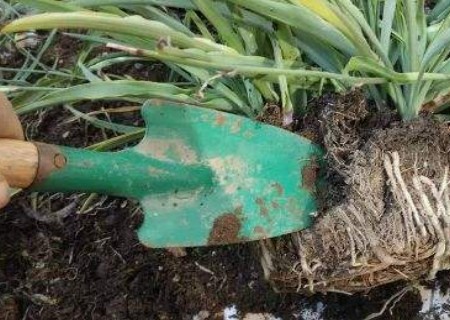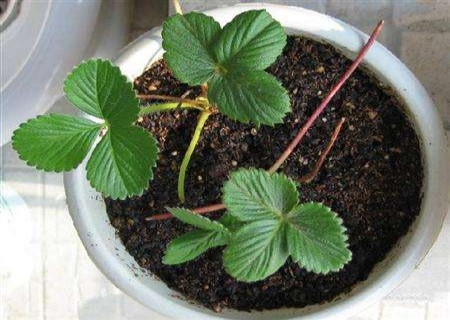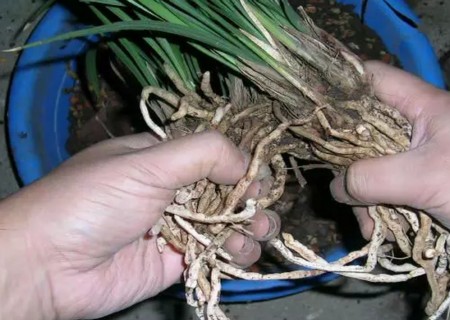How to split potted Cymbidium
The potted flowers that can be propagated are mainly perennial evergreen flowers, some of which rely on horizontal underground stems to expand the clumps. When dividing the plant, first take the mother plant out of the flowerpot, shake off the outer soil, use a knife or pruning shears to break the underground stem connected between the leaves, and then it can be divided into several plants and planted separately.
Orchid is one of the ten famous precious flowers in China, which is praised, intoxicated, fascinated and loved by Chinese and foreign celebrities and ordinary people because of its detachment and elegance. Nowadays, it has gradually become a trend for potted orchids to enter people's families. Next, I would like to introduce the method of ramet propagation of Cymbidium.

First, the time of plant division
When the plant material in the orchid basin is used for too long or there is no room for growth, it is necessary to split or turn the pot. Generally speaking, the ramet time is the most suitable in spring and autumn, when the orchid plant is in the mature stage, and the damage rate can be reduced to the lowest. The first half of the year had better be the Spring Equinox to Grain Rain, when the florescence is over, the leaf buds have not yet sprouted, it is not easy to suffer frost injury, and the pot can be turned at the right time.
In the second half of the year, it would be better for the Autumn Equinox to Frosts Descent, the hanging orchid will enter a dormant state, when turning the basin will less affect the growth of the hanging orchid, after winter rest and recuperation, nutrition accumulation, it will be able to blossom and sprout very well in spring, and master the propagation time of orchid ramets. It is also an important link to maintain the orchid.
II. Preparation for dividing the basin
Before dividing the basin, the water control ranges from 1 week to half a month, depending on the degree of dryness and wetness of the orchid pot plant. My Jianlan water control has been exactly one month. The purpose of water control is to make the orchid root have less water content, make it whitish and soft, and it is not easy to break when dividing the basin. Langen is a fleshy root, and it is easy to break when it absorbs enough water.
Third, the method of dividing plants.
1. Seedling emergence: for the basin orchid that has grown all over the basin, it should not be pulled out forcefully, otherwise it will cause too much damage to the orchid plant, or pull out the plant leaves, or cut off too many roots. Therefore, we should not hesitate to break the orchid pot and take out the orchid seedlings. Then shake off the matrix in the root cluster and cluster it. If the matrix is hardened or sticky, it can only be washed away with water before clustering. If the basin orchid is not yet full, you can remove the basin surface matrix with your fingers, slap the periphery of the orchid basin a few times, then use a wooden stick to loosen the matrix from the middle hole in the basin bottom, then hold the edge of the basin with both hands, hold the orchid plant basin with your fingers, and shake the orchid basin semi-hanging upside down. you can pour out the orchid seedlings.
2. Washing and drying the roots: it is best to wash the roots with tap water. Soaking is easy to infect bacteria. After the matrix is washed off, the orchid plant is spread out in the sun, cover the orchid leaf with a sunshade net, and turn the orchid root in the sun for two or three hours to make the orchid root soft and tough for ramet.
3. Ramet: because orchid plants are fond of clustering, they should be separated from the conjoined plants of the second or third generation according to their habits.
4. When cleaning and disinfection, the withered leaf tips and petioles should be cut off, and the wounds can be smeared with carbendazim and topiramate fungicides.
Cymbidium has strong adaptability, high survival rate and easy branching propagation. The clustered stems and leaves of the stolon can be cut (it is a new plant larva with leaves on the top and roots at the bottom) and can be cultivated directly in a flowerpot. Newly planted plants should be kept in shade to avoid direct sunlight. The ramet is watered once after the pot, and then moved to a shady place for maintenance for a few days, often spraying water around to prevent withering. The pot soil should not be too wet, or the wound on the root system will rot easily. Wait for the new leaves to grow, indicating that the new roots have been formed, and then transferred to normal maintenance.
Note:
1. Don't water before ramet, it is convenient for work.
2. Judge before ramet.
① first determined that the new plant had taken root, which could be judged by whether the plant had new buds or not.
The basin soil should be kept dry before ② ramet, so as to facilitate operation.
③ should avoid ramet at flowering stage so as not to affect flowering and should be carried out after flowering.
The temperature of ④ is too cold or too hot, so as not to cause chilling injury or water evaporation, resulting in dehydration and death.
3. Ramet should use new soil to avoid infection with bacteria.
The methods of disinfection include soaking in potassium permanganate for 5 minutes, soaking in 100 degrees boiling water, sun exposure or high temperature disinfection.
Time: 2019-06-10 Click:
- Prev

How to plant potted strawberry seeds
In theory, strawberries are not suitable to be sown with seeds, because this will lead to the degradation of some advantages, and family planting may not care so much, so this article will take a look at the sowing methods of strawberry seeds. I hope you can get something from the article. Strawberry seeds are small and must be fine when sowing.
- Next

Diagram of ramet process of potted Magnolia
At an appropriate time, the axillary buds at the junction between the pseudobulbs and roots of Cymbidium are cut off from the mother and cultured in vitro, which is called ramet propagation of Cymbidium. Cymbidium has strong adaptability and regeneration ability. a pot of adult Cymbidium can often send out several or even more than a dozen axillary buds a year.
Related
- Fuxing push coffee new agricultural production and marketing class: lack of small-scale processing plants
- Jujube rice field leisure farm deep ploughing Yilan for five years to create a space for organic food and play
- Nongyu Farm-A trial of organic papaya for brave women with advanced technology
- Four points for attention in the prevention and control of diseases and insect pests of edible fungi
- How to add nutrient solution to Edible Fungi
- Is there any good way to control edible fungus mites?
- Open Inoculation Technology of Edible Fungi
- Is there any clever way to use fertilizer for edible fungus in winter?
- What agents are used to kill the pathogens of edible fungi in the mushroom shed?
- Rapid drying of Edible Fungi

